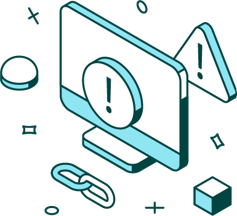Source Code Leaks: Protect Your Digital Assets
Protecting source code is critical to preventing unauthorized access, theft, and misuse. But even with strong safeguards and no signs of malicious intent, you can still experience a proprietary source code leak. That’s why continuous source code monitoring is essential to detect exposure early, protect your brand and intellectual property, and respond swiftly to minimize risk.
According to ZDnet, “a scan of billions of files from 13% of all GitHub public repositories over a period of six months revealed that over 100,000 repos have leaked API tokens and cryptographic keys, with thousands of new repositories leaking new secrets on a daily basis.”
By implementing robust processes to detect accidental exposure and proactively track leaked proprietary source code, organizations can avoid becoming part of the 13% that risk damaging their brand.

Why Source Code Monitoring Matters
Proprietary source code is highly valuable, not just to your organization, but also to threat actors. And gaining access is often easier than you might think. Developers may accidentally leave sensitive data in code, or share it via paste sites or public repositories, where it can be exposed due to weak access controls or compromises.
If not properly scrubbed or secured, a source code leak can provide attackers with a blueprint to exploit systems or reverse-engineer intellectual property.
Here are some of the most critical risks associated with exposed source code:
- Intellectual property theft: Source code often contains proprietary information and if obtained by the wrong group, can have devastating consequences for the organization’s profitability and reputation.
- Data breaches: Sensitive information such as API keys, encryption keys, and database credentials, can be exposed through a source code breach leading to a host of threats.
- Cyberattacks: Source code also can be a beacon to software architecture and vulnerabilities leading to compromised security and networks.
Monitoring social media sites, code repositories, and paste sites for leaked or stolen source code allows organizations to proactively respond to potential threats.
Safeguard Against Common Source Code Threats

Source code can be exposed in a variety of ways. Some are accidental, others the result of targeted theft. Regardless of intent, the consequences can be significant. What happens when a source code leak falls into the wrong hands:
- Accidental sharing
- Threat actor abuse on paste sites and code repositories
- Someone maliciously sharing code externally
- Stolen proprietary programming code
Fortra Brand Protection Source Code Monitoring can pursue the shutdown of confirmed source code threats that exhibit properties indicative of fraudulent activities.
Proactive Source Code Monitoring & Rapid Remediation
Fortra Brand Protection continuously monitors for unauthorized use of proprietary source code, whether embedded in suspicious software or posted across public forums. Our expert analysts track social platforms, paste sites, and underground forums to detect code that infringes on your brand or exhibits traits of malicious software.
When a threat is identified and confirmed, we act quickly to initiate takedown efforts. Backed by a global enforcement network and proven expertise, Fortra delivers faster, more effective remediation than traditional methods, helping protect your brand and software assets from lasting harm.